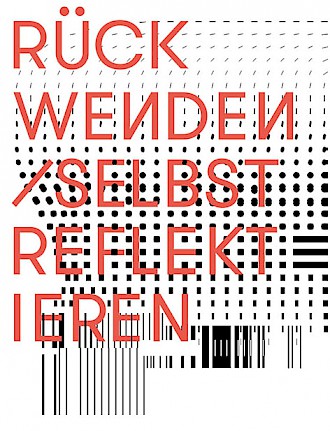
Annual Topic 2019/20
The operation of recursion can already appear as a form of self-reflection. In this sense, for example, Victor Stoichita spoke of the “self-aware image”, with reference to various forms of meta-painting. The plan is therefore to examine operations of turning-back and self-reflection at the end of this phase. These are also traditionally thematized, in the framework of a logic of exclusion, as the repetition of an operation of exclusion or differentiation, for example as a “re-entry”. To complement this, operations will be examined which owe more to material logic than abstract logic, and which come into being, for example, in topological processes of feedback; that is, in concrete terms, in the material turning-back of an object to itself. An example of this is folding, the bending back and turning back of a surface, a piece of fabric or paper, onto itself. In the overlap with itself, something qualitatively new becomes visible; the two-dimensional becomes three-dimensional. An object then appears, from the point of view of such material topologies, as a medial space which has become self-reflexive. This process is complemented, in turn, by unfolding or spreading out, which leads from three dimensions back to two.
Another example is processes of cross-fading and overlapping in images and of images, such as are possible, for instance, in projection techniques. Here reflection intersects with the operations of condensing and overlaying. Of particular interest here are the page-like layers of images, (simulated) paper surfaces and other user interfaces in the arrangement of windows displayed on screens, which can be retrieved from their layered repository and activated at any time, and then dismissed again into the depths of the stack. This clearly shows the time factor in the process of reflection: it consists in a return to something earlier, which is combined with later events to form a permanent present. This also constitutes a connection between the previously examined operation of addressing and that of reflection. The aim is to facilitate description of the emergence of self-referentiality in creative fields, along with its capacity for self-thematization, self-differentiation, self-virtualization, self-modification, self-control and self-reproduction.